Abstract
The effect of chronic low frequency stimulation on the tibialis anterior muscle of children with Duchenne muscular dystrophy was investigated. Baseline data from 16 boys established low values of maximum voluntary contraction which did not improve with age. Studies of the contractile properties revealed significant slowing (p less than 0.001) of mean relaxation time compared to that of normal children's muscles. There was no loss of force during fatigue testing, as in normal children, but in contrast to normal children, there was no potentiation at lower frequencies of stimulation. Intermittent chronic low frequency stimulation of muscles in six young ambulant children with Duchenne muscular dystrophy resulted in a significant increase (p less than 0.05) in mean maximum voluntary contraction compared with the mean forces exerted by the unstimulated control muscles of the contralateral leg.
Full text
PDF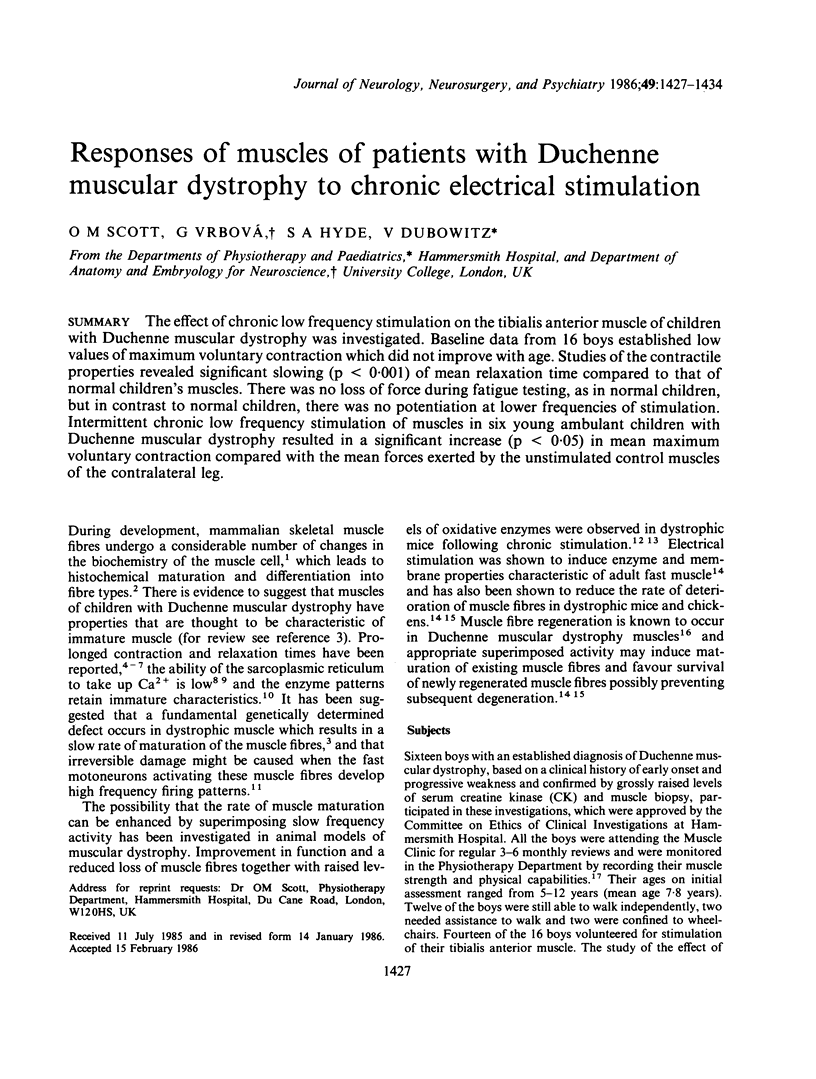
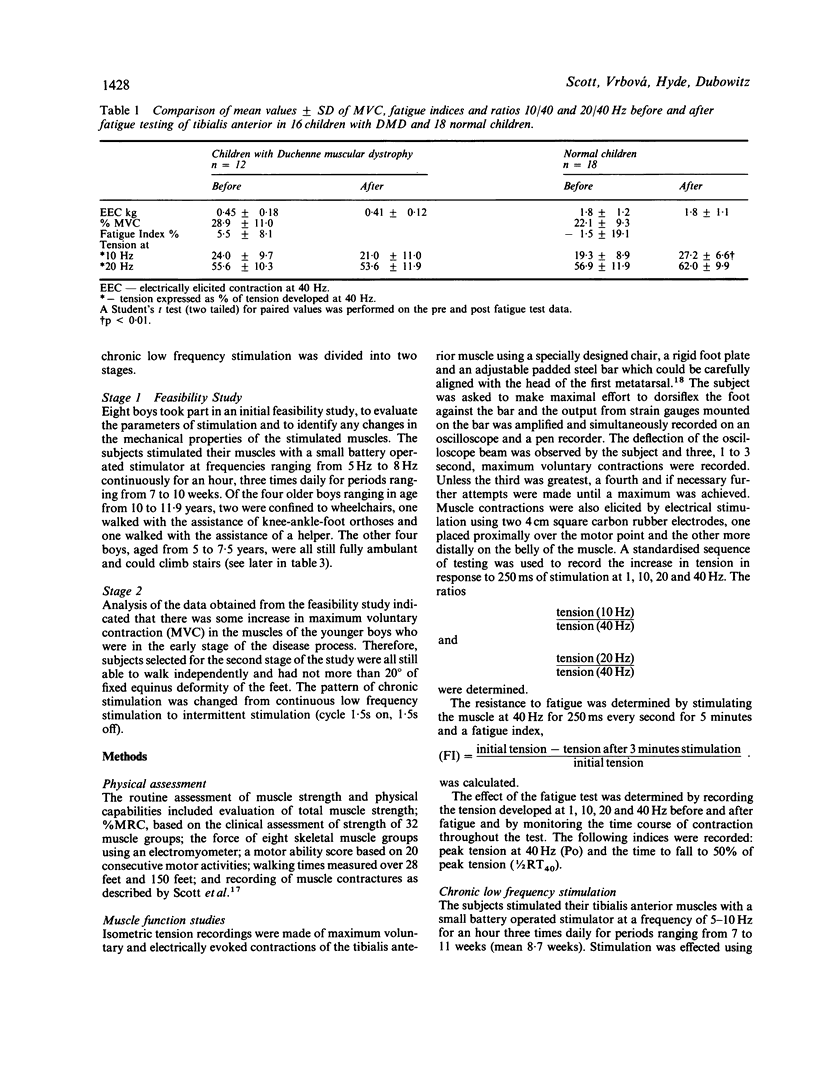

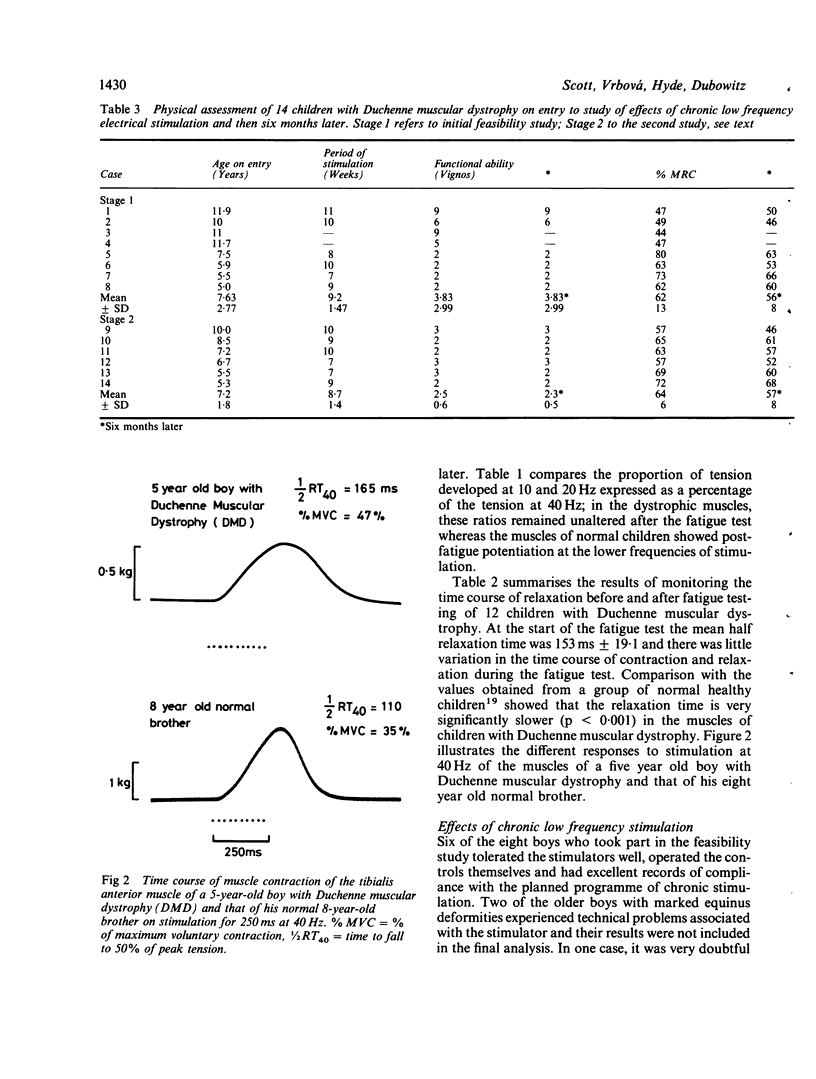
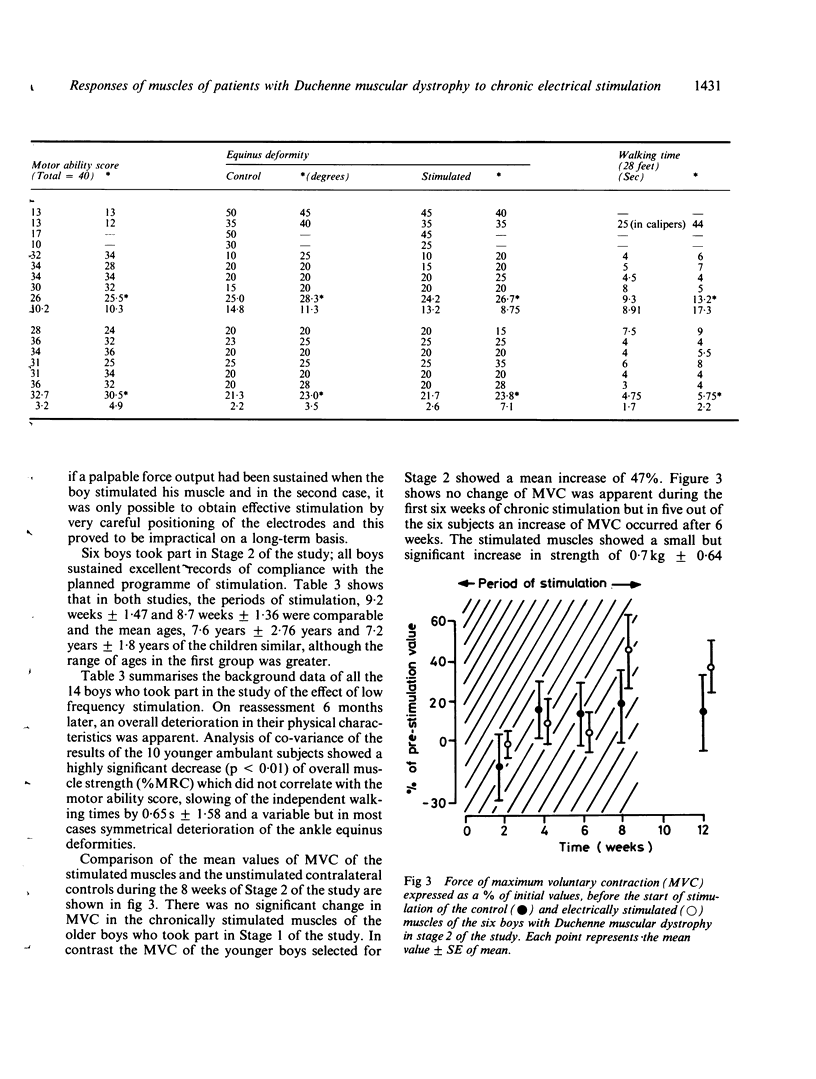
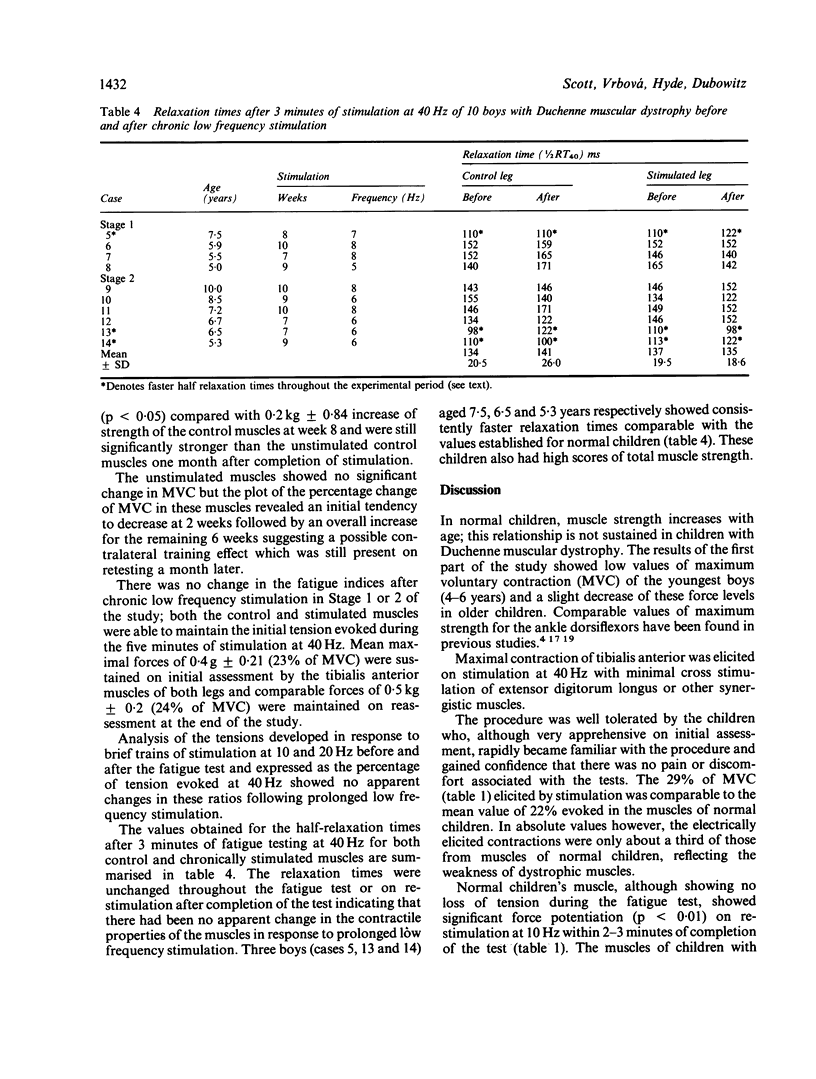
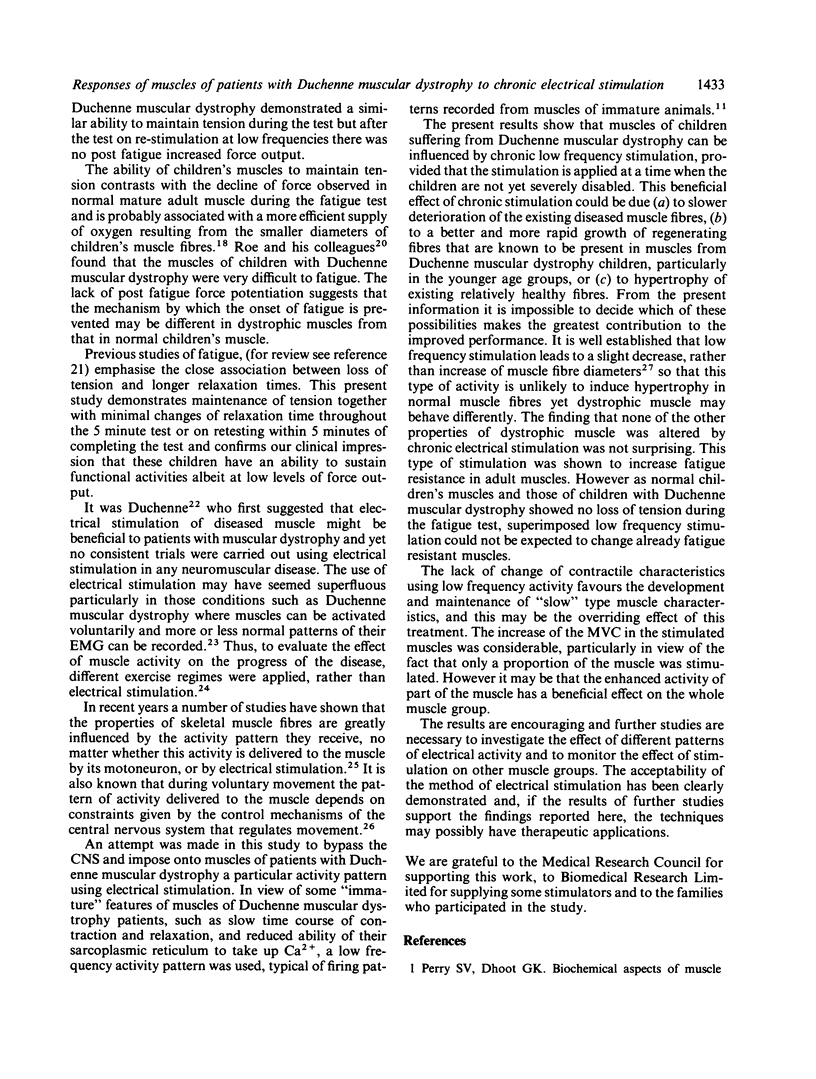
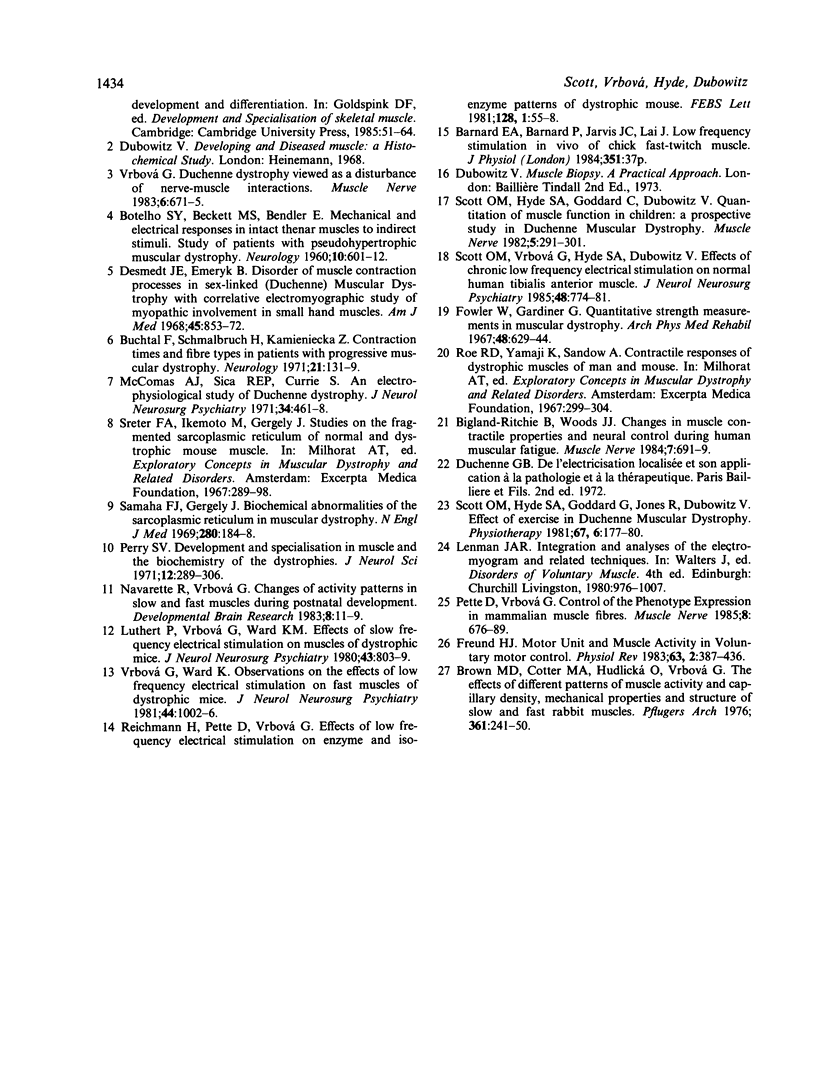
Selected References
These references are in PubMed. This may not be the complete list of references from this article.
- BOTELHO S. Y., BECKETT S. B., BENDLER E. Mechanical and electrical responses of intact thenar muscles to indirect stimuli: study of patients with pseudohypertrophic muscular dystrophy. Neurology. 1960 Jun;10:601–612. doi: 10.1212/wnl.10.6.601. [DOI] [PubMed] [Google Scholar]
- Bigland-Ritchie B., Woods J. J. Changes in muscle contractile properties and neural control during human muscular fatigue. Muscle Nerve. 1984 Nov-Dec;7(9):691–699. doi: 10.1002/mus.880070902. [DOI] [PubMed] [Google Scholar]
- Brown M. D., Cotter M. A., Hudlická O., Vrbová G. The effects of different patterns of muscle activity on capillary density, mechanical properties and structure of slow and fast rabbit muscles. Pflugers Arch. 1976 Feb 24;361(3):241–250. doi: 10.1007/BF00587288. [DOI] [PubMed] [Google Scholar]
- Buchthal F., Schmalbruch H., Kamieniecka Z. Contraction times and fiber types in patients with progressive muscular dystrophy. Neurology. 1971 Feb;21(2):131–139. doi: 10.1212/wnl.21.2.131. [DOI] [PubMed] [Google Scholar]
- Desmedt J. E., Emeryk B. Disorder of muscle contraction processes in sex-linked (Duchenne) muscular dystrophy, with correlative electromyographic study of myopathic involvement in small hand muscles. Am J Med. 1968 Dec;45(6):853–872. doi: 10.1016/0002-9343(68)90184-8. [DOI] [PubMed] [Google Scholar]
- Fowler W. M., Jr, Gardner G. W. Quantitative strength measurements in muscular dystrophy. Arch Phys Med Rehabil. 1967 Dec;48(12):629–644. [PubMed] [Google Scholar]
- Freund H. J. Motor unit and muscle activity in voluntary motor control. Physiol Rev. 1983 Apr;63(2):387–436. doi: 10.1152/physrev.1983.63.2.387. [DOI] [PubMed] [Google Scholar]
- Luthert P., Vrbová G., Ward K. M. Effects of slow frequency electrical stimulation on muscles of dystrophic mice. J Neurol Neurosurg Psychiatry. 1980 Sep;43(9):803–809. doi: 10.1136/jnnp.43.9.803. [DOI] [PMC free article] [PubMed] [Google Scholar]
- McComas A. J., Sica R. E., Currie S. An electrophysiological study of Duchenne dystrophy. J Neurol Neurosurg Psychiatry. 1971 Aug;34(4):461–468. doi: 10.1136/jnnp.34.4.461. [DOI] [PMC free article] [PubMed] [Google Scholar]
- Perry S. V. Development and specialization in muscle and the biochemistry of the dystrophies. J Neurol Sci. 1971 Mar;12(3):289–306. doi: 10.1016/0022-510x(71)90064-5. [DOI] [PubMed] [Google Scholar]
- Pette D., Vrbová G. Neural control of phenotypic expression in mammalian muscle fibers. Muscle Nerve. 1985 Oct;8(8):676–689. doi: 10.1002/mus.880080810. [DOI] [PubMed] [Google Scholar]
- Samaha F. J., Gergely J. Biochemical abnormalities of the sarcoplasmic reticulum in muscular dystrophy. N Engl J Med. 1969 Jan 23;280(4):184–188. doi: 10.1056/NEJM196901232800403. [DOI] [PubMed] [Google Scholar]
- Scott O. M., Hyde S. A., Goddard C., Dubowitz V. Prevention of deformity in Duchenne muscular dystrophy. A prospective study of passive stretching and splintage. Physiotherapy. 1981 Jun;67(6):177–180. [PubMed] [Google Scholar]
- Scott O. M., Hyde S. A., Goddard C., Dubowitz V. Quantitation of muscle function in children: a prospective study in Duchenne muscular dystrophy. Muscle Nerve. 1982 Apr;5(4):291–301. doi: 10.1002/mus.880050405. [DOI] [PubMed] [Google Scholar]
- Scott O. M., Vrbová G., Hyde S. A., Dubowitz V. Effects of chronic low frequency electrical stimulation on normal human tibialis anterior muscle. J Neurol Neurosurg Psychiatry. 1985 Aug;48(8):774–781. doi: 10.1136/jnnp.48.8.774. [DOI] [PMC free article] [PubMed] [Google Scholar]
- Vrbova G. Duchenne dystrophy viewed as a disturbance of nerve-muscle interactions. Muscle Nerve. 1983 Nov-Dec;6(9):671–675. doi: 10.1002/mus.880060909. [DOI] [PubMed] [Google Scholar]


